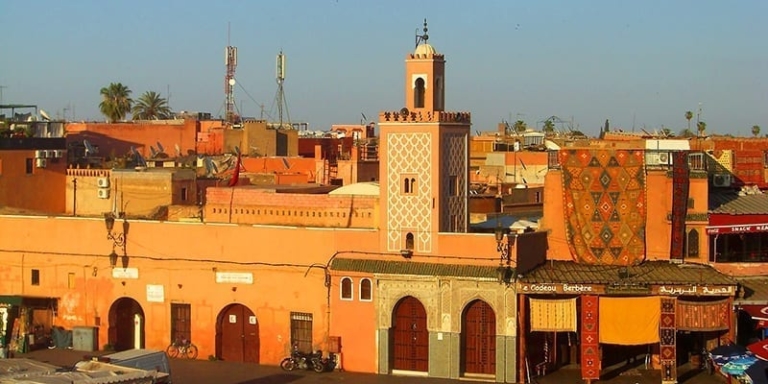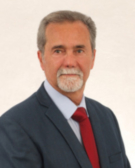
As of March 31, Morocco had reported 574 cases of infection and 33 fatalities from COVID-19. The Moroccan government has moved quickly to stay ahead of the curve, implementing a nationwide lockdown, disseminating basic medical information to the populace, and instituting, in collaboration with banks and businesses, a system to compensate those who lose their income due to layoffs and shutdowns.
The coronavirus crisis has led many to applaud an energized collaboration between the government, the private sector, and civil society organizations in Morocco, one that created plans to help those most likely to be impacted—as well as the general population—and inspired volunteerism across the country. This, according to more optimistic observers, could herald a new formula for dealing with Morocco’s long-term political and economic development challenges.
Thus far, the reign of Mohammed VI has thrived on the perceived notions that his is a gentler, kinder, and less corrupt rule than that of his father, Hassan II, and that life for the average Moroccan is on a steady upswing. The COVID-19 crisis presents challenges and opportunities for the regime: the deep state (known in Moroccan dialect as the Makhzen) with the king at its head, controls the economic, political, and security strings in the country. If this power elite can demonstrate concern for the survival and health of its citizenry and deft management of the crisis at hand, it may indeed hope to gain the trust of the population at large and to stem the tide of any residual discontent. If, on the other hand, the elite are seen using the opportunity to further enrich themselves at the expense of the poorer classes, then the current social calm engendered by mandated sequestration will prove only a respite before troubles to come.
The reign of Mohammed VI, now into its third decade, has brought some improvements on the political, social, and economic fronts. Despite slight fluctuations from 2008 to 2019, Morocco’s GDP growth rate has averaged 3.9 percent over this period and the IMF/World Bank’s annual meeting for 2021 is now scheduled to be held in Marrakech—a choice made deliberately to draw attention to, and encourage, what is perceived as a positive trend in the country. IMF Managing Director Kristalina Georgieva has complimented Morocco on progress toward inclusive growth, better governance, and anti-corruption strategies. Morocco’s numbers have also steadily risen on the human development index, indicating improvements in life expectancy, educational opportunities, and Gross National Income (GNI) per capita. Poverty, however, has remained an issue and unemployment, though just below 10 percent in recent years, is still at 9.2 percent—too high for comfort.
On the Political Front
The most popular reforms of Mohammed VI, after 12 years of his reign, were enshrined in the referendum of 2011 in which his reform measures were put before the people for a yes or no vote. The result of the poll was a resounding—if not entirely convincing—yes. That the king renounced his honorific “commander of the faithful” (amir al-mu’mineen) title was a nod to those Islamists who had long rejected that claim by Hassan II. Finally, the king pledged to further respect the will of the people by committing himself to appointing, as prime minister, whoever is the head of the party that wins the most votes in parliamentary elections (Article 47 of the new constitution). Though a clear acknowledgment of secular reformers seeking a full parliamentary democracy in Morocco, the concession was actually less democratic than meets the eye.
In March 2017, King Mohammed relieved the Islamist prime minister, Abdelilah Benkirane, of his position when the latter failed to form a coalition cabinet after the 2016 elections. Negotiations between Benkirane’s Islamist Justice and Development party (PJD) and the more royalist National Rally of Independents (RNI) to form a majority government stalled over which other parties to include in the new cabinet, giving the king the opportunity to exploit the impasse and change the prime minister.
Benkirane, head of the PJD, had led the government per the king’s pledge, since his party had won the 2011 elections. Although the king was well within his constitutional rights to replace Benkirane, there was considerable speculation at the time that the monarchy maneuvered to weaken and break his coalition and force him out of government. To be sure, the palace had made peace with the Islamist PJD, long considered tame by the Makhzen, but not with the Justice and Charity Organization—considered the more radical of the two Islamist parties and whose leader, Sheikh Abdesslam Yassine, had spent the last two decades of his life under house arrest. In fact, prime minister Benkirane had been stymied at every turn, if not by the king’s loyalists in parliament then certainly by the king himself, who retained the power to hire and fire ministers and initiate and approve legislation.
Prime minister Benkirane had been stymied at every turn, if not by the king’s loyalists in parliament then certainly by the king himself, who retained the power to hire and fire ministers and initiate and approve legislation.
Currently, Saadeddine Othmani, one of the leaders in Benkirane’s party, heads the coalition government but looks increasingly like a lame duck figure, unable to make any bold decisions or craft a unified strategy for his cabinet. The PJD—caught between leftist parties that oppose its conservative social agenda and royalist parties with a vested interest in the deep state’s corruption—finds itself incapable of being either true to its Islamist ideology or bold enough to challenge the status quo and line up more clearly with its popular base. The king, therefore, remains the ultimate arbiter in party squabbles and the final decision maker. The latest newcomer to Moroccan party life, the Authenticity and Modernity Party (PAM), led by a close friend of King Mohammed, is widely regarded as the royalist spoke in the wheel, preventing Othmani from disregarding the king’s will and agenda.
Implications for Moroccan Society
Reverberations from the Rif riots of 2017 have not subsided completely. Leaders of those riots were sentenced to 20 years in prison. Some sentences have been commuted or completely pardoned by the king, but lack of transparency in the courts keeps the families of those arrested on edge. The corruption of justice remains a live issue and social media is rife with protest.
Arrests of young Moroccan artists, students, and journalists for expressing their thoughts and political opinions on social media platforms as well as in the arts, including musicians, point to a backsliding in reforms instituted by the monarchy in the early years of Mohammed VI’s rule. Some of these arrests include abuse and violations of women’s rights. After an initial burst of reform measures and optimism, young Moroccans seem to have settled back, reluctantly accepting that despite their frustrated 2011 ambitions, they are better off than their brothers and sisters elsewhere in the region living in war zones and chaos.
It has become cliché to cite information on how much life has improved under Mohammed VI as compared to that under his father, Hassan II, when disappearances, mass arrests, and torture were the norm during what came to be known as the “years of lead.” The sad fact, however, is that progress peaked early on under the current monarch and human rights activists now lament what they describe as a regression to past practices by the authorities. Moroccans say that the Makhzen lives on and old habits die hard.
Progress peaked early on under the current monarch and human rights activists now lament what they describe as a regression to past practices by the authorities. Moroccans say that the Makhzen lives on and old habits die hard.
Human Rights Watch reports that at least ten Moroccans have been arrested in the past six months for social media activities considered offensive or insulting to the monarchy or to the king himself. The good news is that these and other cases relating to matters of opinion are being processed by the courts, i.e. within some bounds of transparency. The bad news, however, is that the justice system has remained in the clutches of corruption and journalists and social media activists now feel that they are back to practicing freedom of expression at their own risk.
Women’s rights in Morocco appear to be way ahead of most Arab societies. Women in Morocco go to school, pursue higher education, and are not barred from well-paying white-collar jobs. Socially, they move and travel freely; unmarried women are able to live on their own and lead independent lives. These privileges, however, are mostly found in the cities and not in the countryside, and women play political roles to a large extent if they come from well-to-do urban families. After all the reforms, women in parliament today constitute only 21 percent of the total membership. Women’s status laws are codified in what is known as the Mudawwana, a document that was first reformed in 2004 and further liberalized in the 2011 constitution, which prohibits discrimination based on gender. It is noteworthy that social norms, especially in the rural areas, are very conservative; here, women’s progress is limited and domestic violence remains a serious problem, despite the valiant efforts by NGOs and the passage of a new law criminalizing certain acts of violence against women.
Economic and Development Considerations
There is no doubt that life, in general, has improved for the average Moroccan over the past two decades. However, Morocco’s numbers for indices on democracy, human development, and transparency—despite some progress—have remained below average. In addition, disparity between rich and poor continues to be painfully visible in large cities and rural areas. Amid ostentatious wealth in some cities, the fact is that a quarter of Morocco’s population remains illiterate, which dooms them to poverty, with 19 percent of the population living on less than four dollars a day.
Amid ostentatious wealth in some cities, the fact is that a quarter of Morocco’s population remains illiterate, which dooms them to poverty, with 19 percent of the population living on less than four dollars a day.
In the end, it will be economic performance and crisis management that determine if the monarchy in Morocco can retain the advantages of the calm and stability it has had over other Arab countries that experienced the Arab uprisings of 2011. So far, the government seems to be taking the coronavirus seriously and has implemented measures to limit its spread. Economically, the plan to compensate laborers and uninsured small businesses that stand to be hurt the most if a work stoppage continues beyond their ability to stay afloat, is a promising start. More to the point, of course, will be the availability of health services and the ability of the state to limit the rate of death among those who catch the virus.
With regional extremism, the continuing conflict in the Western Sahara, and an economically and politically frustrated youth, the Moroccan government cannot rest on the laurels of the partially accomplished reforms of the past ten years. It needs to move boldly to tackle the problem of truly integrating its youth, women, and rural poor more genuinely into the Moroccan dream, which has served the business elites and country’s power brokers well but has yet to truly spread the benefit around. The current health crisis presents the opportunity to manage this problem well and, if successful, to use the adopted approach to face the broader social, economic, and political challenges ahead.

